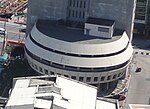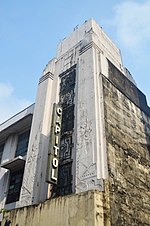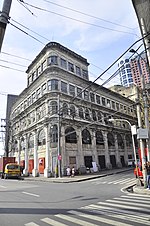Jones Bridge

The William A. Jones Memorial Bridge, commonly known as the Jones Bridge, is an arched girder bridge that spans the Pasig River in the City of Manila, Philippines. It is named after the United States legislator William Atkinson Jones, who served as the chairman of the U.S. Insular Affairs House Committee which had previously exercised jurisdiction over the Philippines and the principal author of the Jones Law that gave the country legislative autonomy from the United States. Built to replace the historic Puente de España (Bridge of Spain) in the 1910s, the bridge connects Quintin Paredes Road at the Binondo district to Padre Burgos Avenue at the Ermita district. Originally designed by Filipino architect Juan M. Arellano using French Neoclassical architecture, the first incarnation of the bridge features three arches resting on two heavy piers, adorned by faux-stone and concrete ornaments, as well as four sculptures on concrete plinths allegorically representing motherhood and nationhood. The original bridge was destroyed during the World War II by retreating Japanese troops and was reconstructed in 1946 by the U.S. and Philippine public works. The reconstructed bridge retained the three arches and two piers but removed all of the ornaments. The bridge was first partially restored in 1998. In 2019, the City Government of Manila began a rehabilitation project to "restore" the Jones Bridge to its near-original design using Beaux-Arts architecture similar to that of Pont Alexandre III in Paris and the return of all four La Madre Filipina sculptures.
Excerpt from the Wikipedia article Jones Bridge (License: CC BY-SA 3.0, Authors, Images).Jones Bridge
Jones Bridge, Manila
Geographical coordinates (GPS) Address Nearby Places Show on map
Geographical coordinates (GPS)
| Latitude | Longitude |
|---|---|
| N 14.595833333333 ° | E 120.97730555556 ° |
Address
Jones Bridge
Jones Bridge
1006 Manila (Fifth District)
Philippines
Open on Google Maps











